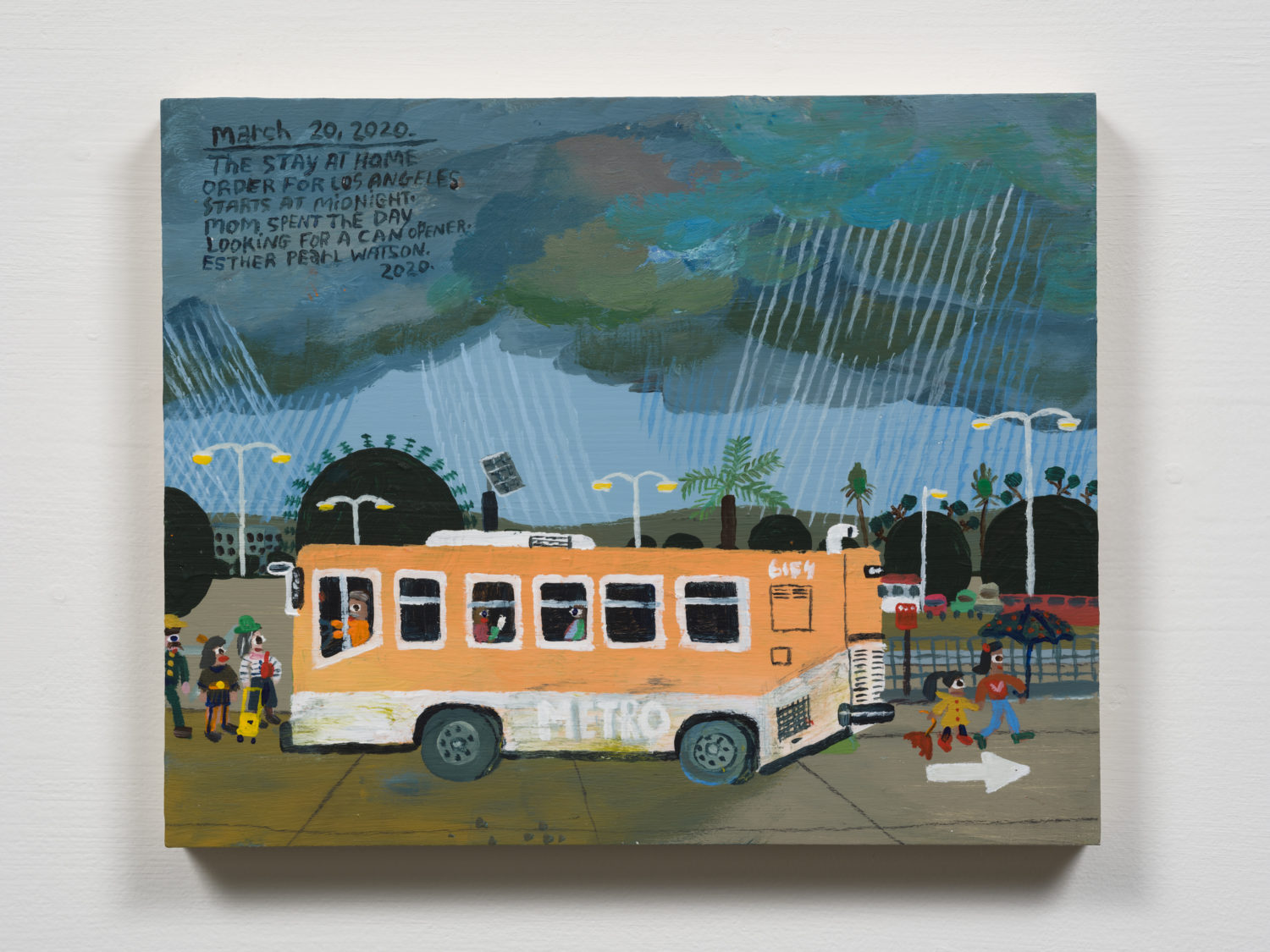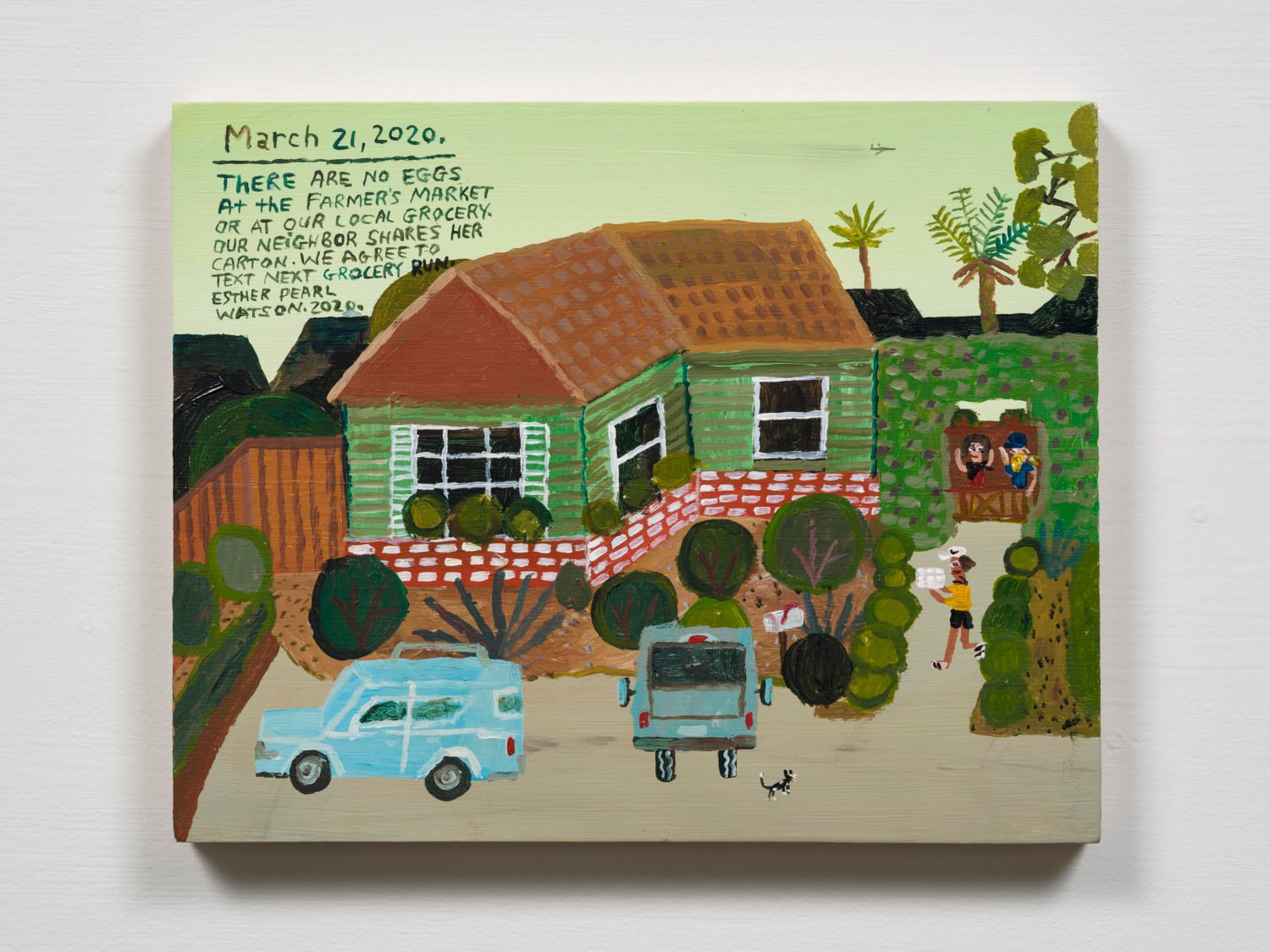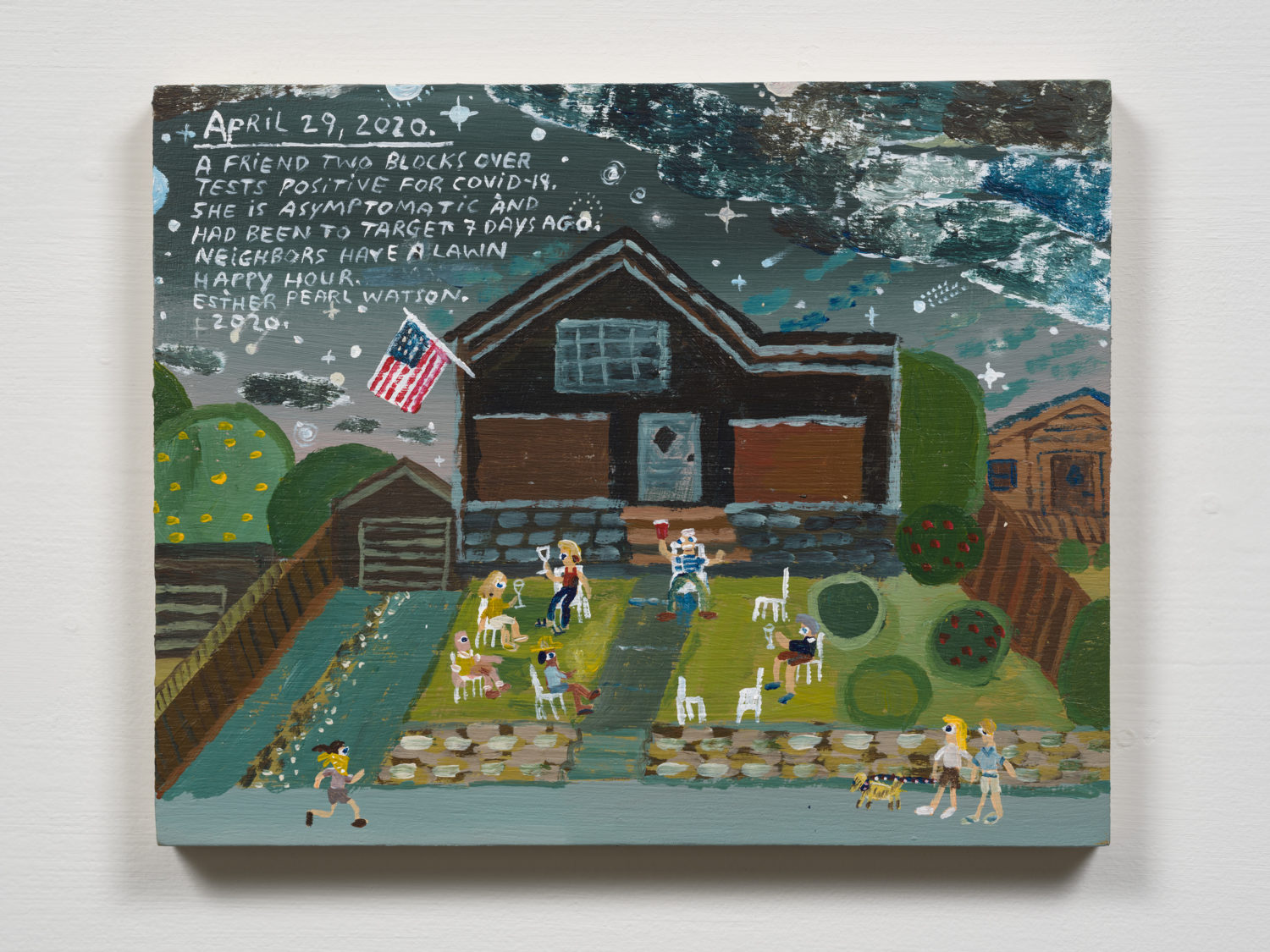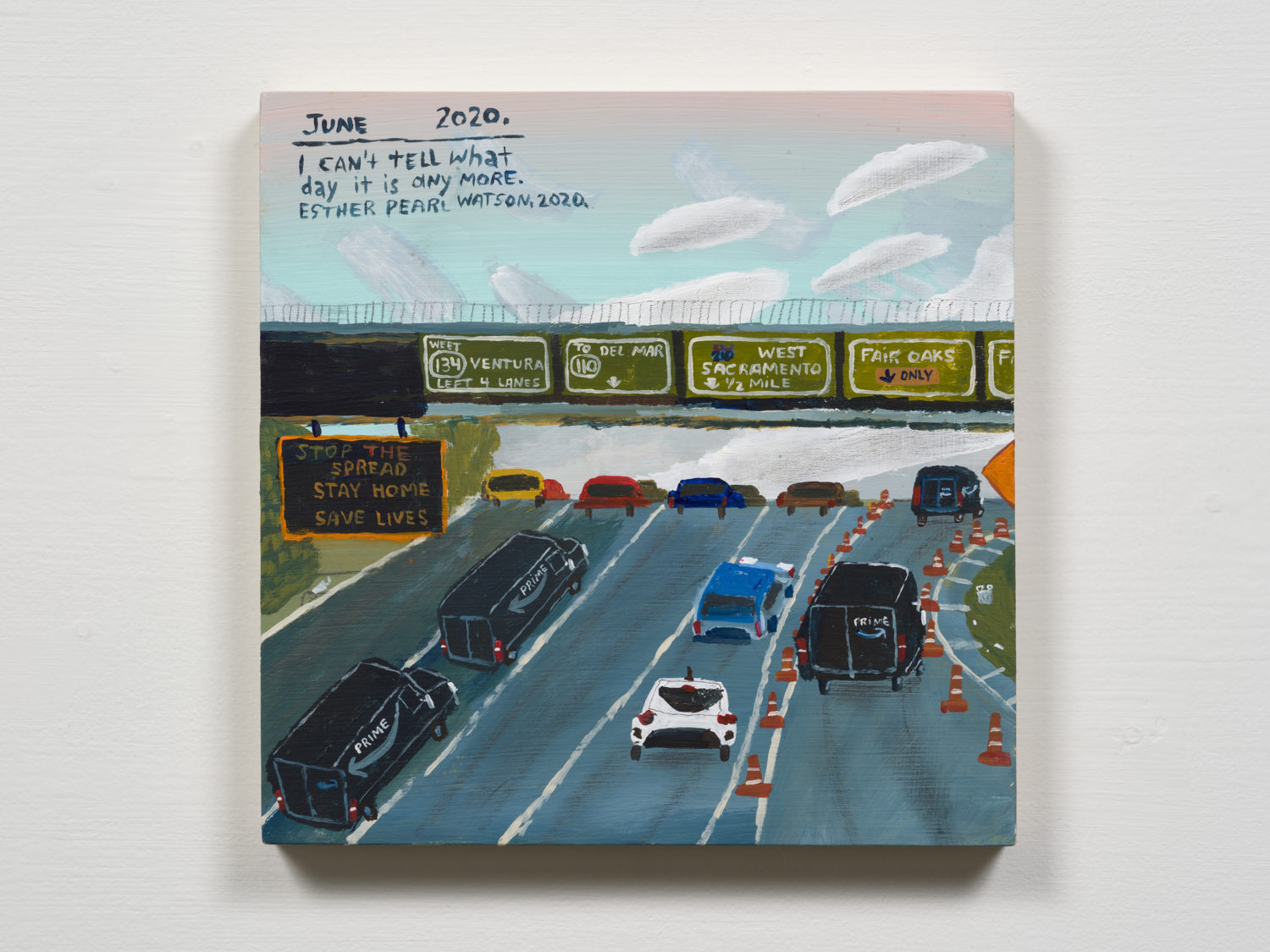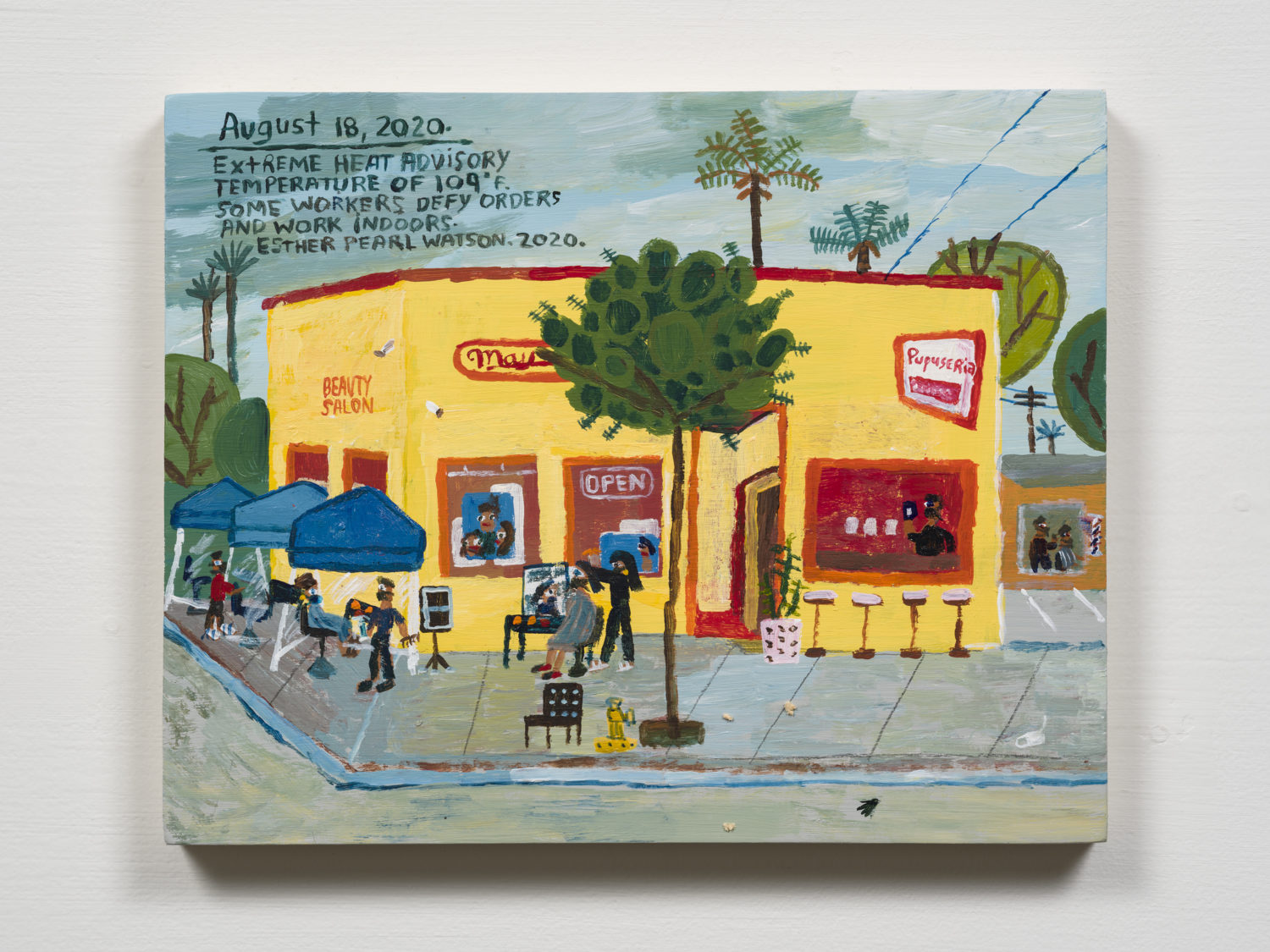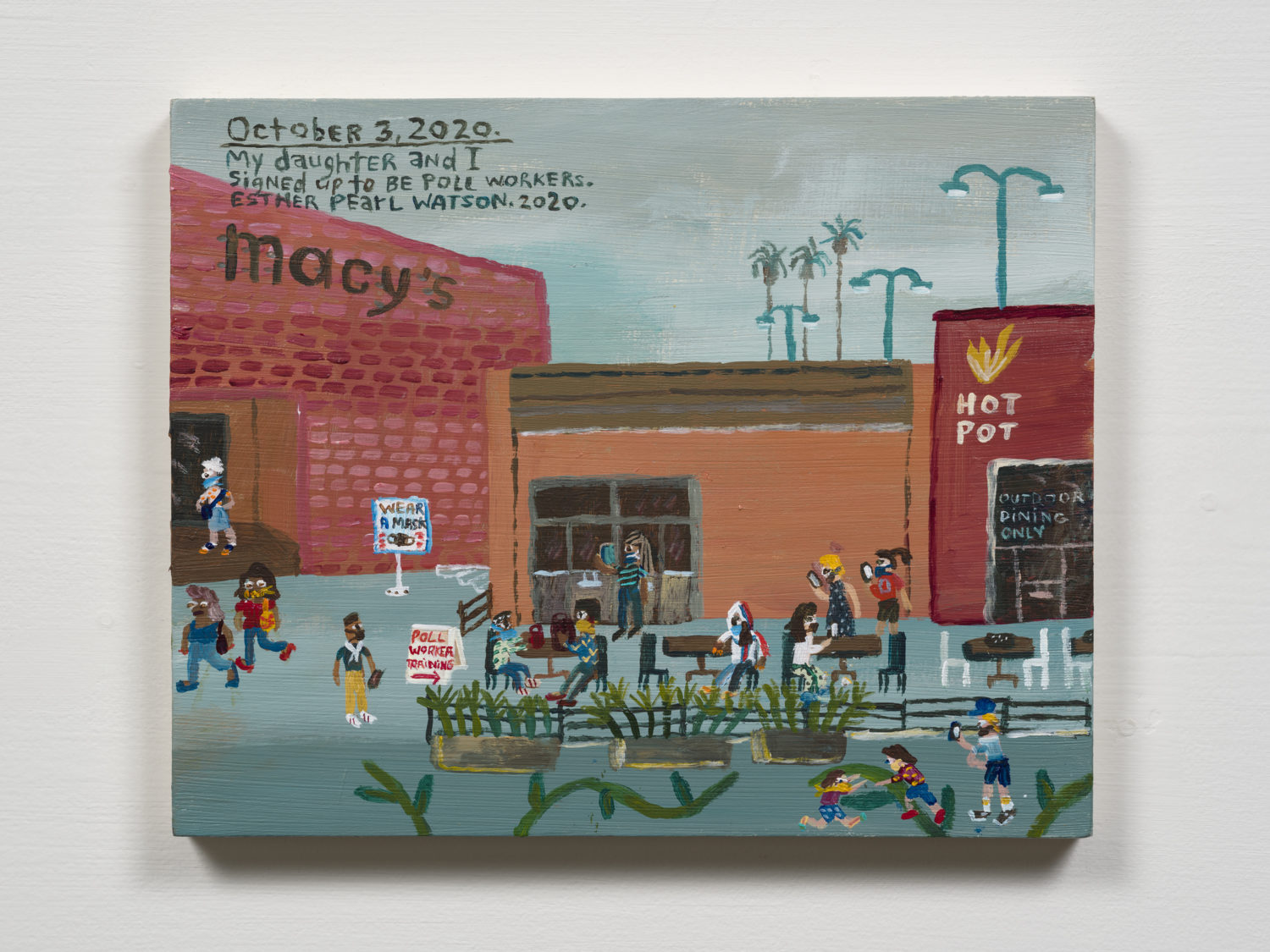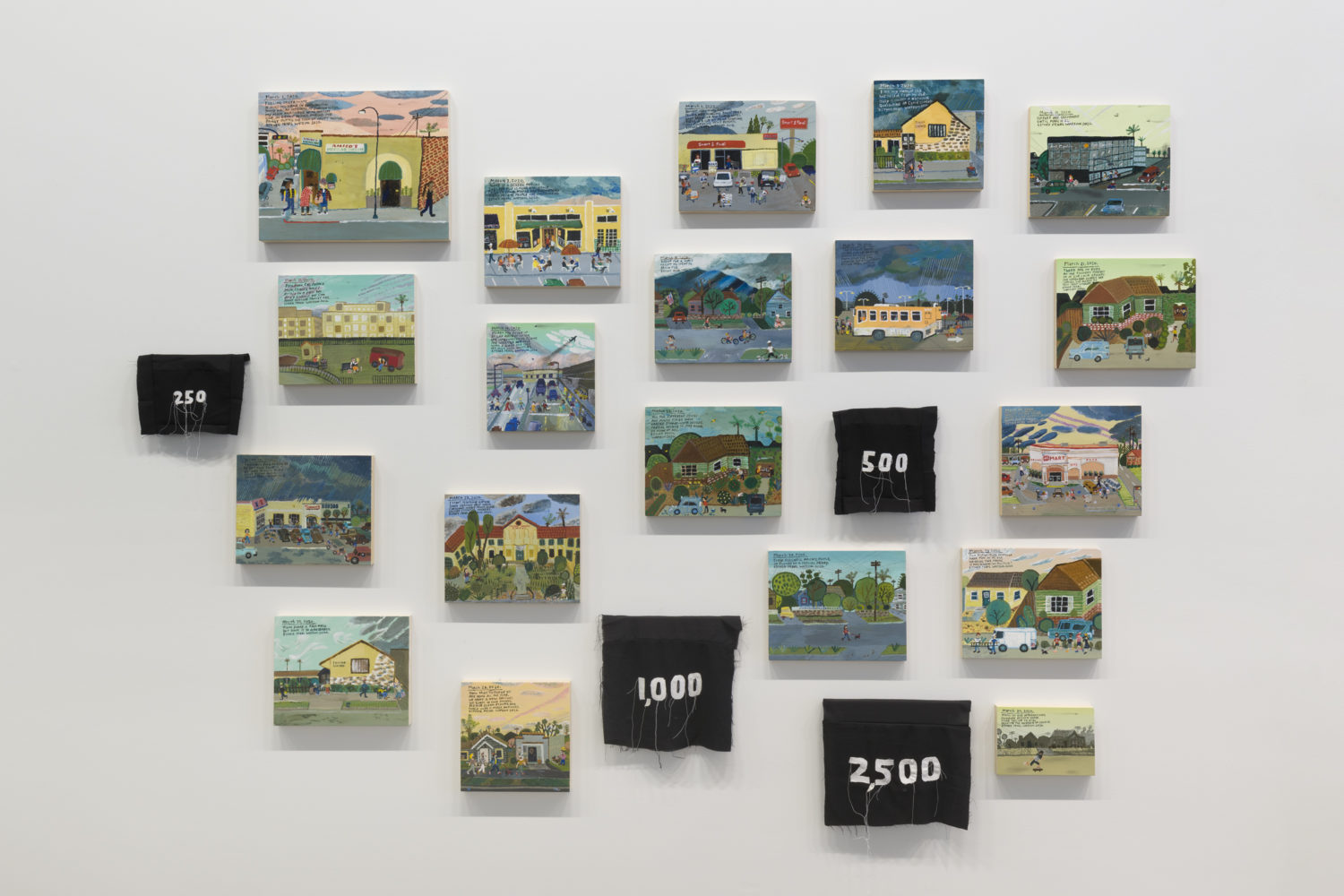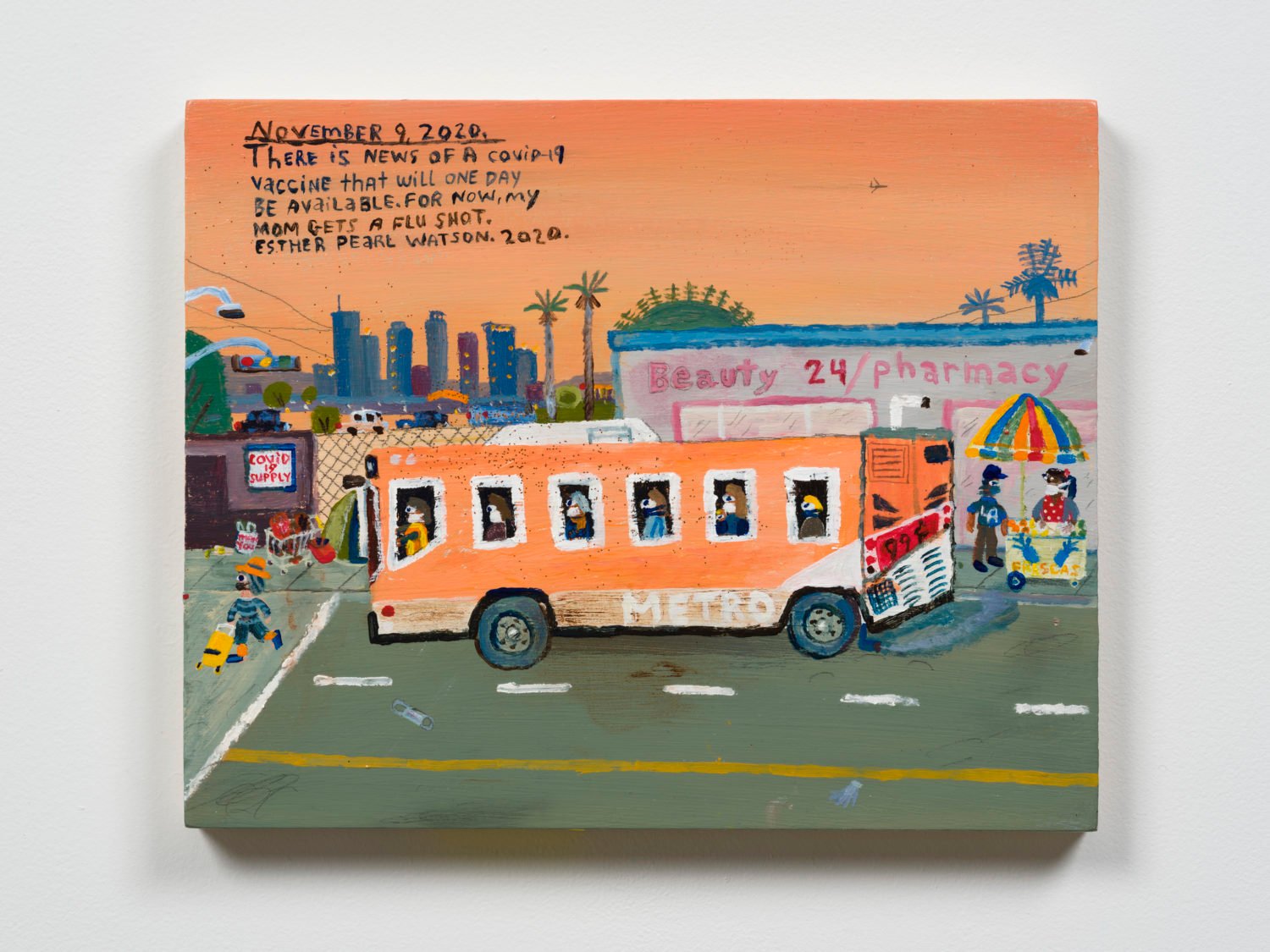In sense this project is a straightforward documentary. One person, a painter living in Los Angeles, spends the better part of a year making daily observations on life in her sphere, with details of any particularly memorable experiences, and notes on current events for context. In the world of art, and especially American folk art, sustained mindfulness and this energy of the small-town diary is a whole genre. But in the studio and community of Esther Pearl Watson in the midst of 2020, it’s anything but commonplace. It’s Covid.
Watson started the body of work that became Safer at Home: Pandemic Paintings in March in the early days of the shelter in place orders in Los Angeles, and the series spans the timeline of the pandemic right through to the days before the show opened at Vielmetter Los Angeles in late November. In a still ongoing series of nearly 200 paintings, each no bigger than a laptop, Watson processes the subtle and cataclysmic changes wrought by a season of public health crises, civil unrest, and political volatility. But she does this through a lens as intimate as the work’s scale, with street views of urban and suburban blocks, one frame at a time.
In her beguiling style of flatness, folksy almost childlike rendering of figures and buildings, expressive foliage and eccentric palette, coupled with blocky text and prosaic captions, Watson uses a motif of repetition to highlight changes to the landscape. Sidewalk, building, sky, people. We see more and more people out walking, more stores boarding up, oddly empty streets, long lines at testing sites, repeated visits to senior living facilities, a wave of new political murals, empty streets newly flooded with BLM protests, the sudden almost universal appearance of masks, the occasional lone figure unmasked, the unexpected attention paid to variations in the weather, and the epic fire season that made life in her Glassell Park area even more unbearable. As time goes on, we see yard signs, ubiquitous Amazon delivery trucks, and a proliferation of detail from the artist’s private life and public experiences.
Each work features the date, the most salient observation or experience as depicted in the scene and maybe some Covid fact, or grim milestone. At the gallery, the paintings are arranged in groupings by month and are interspersed with drooping black banners arranged among them, in white characters presenting starkly just the numbers of the climbing total US death count from the virus: 1, 250, 10,000, 150,000, 200,000, and so on. These numerical shrouds get bigger as the tally increases, while the paintings remain small, so that the presence of death physically comes to overshadow the entire sequence.
But as stark as the context and as unsettling are the milestones she highlights, within each one of these immaculate, vernacular mini masterpieces exists a depth of fine detail, a love of off-kilter pattern and intuitive color, a jauntiness in the figures’ postures, and a clear spirit of resilience, adaptation, cooperation, and an honoring of small empathetic gestures in the actions of the people, and in the actions of the painter as well.
Vielmetter Los Angeles, 1700 S. Santa Fe, downtown. On view online and in person by appointment through February 6; vielmetter.com.
Advertising disclosure: We may receive compensation for some of the links in our stories. Thank you for supporting LA Weekly and our advertisers.



